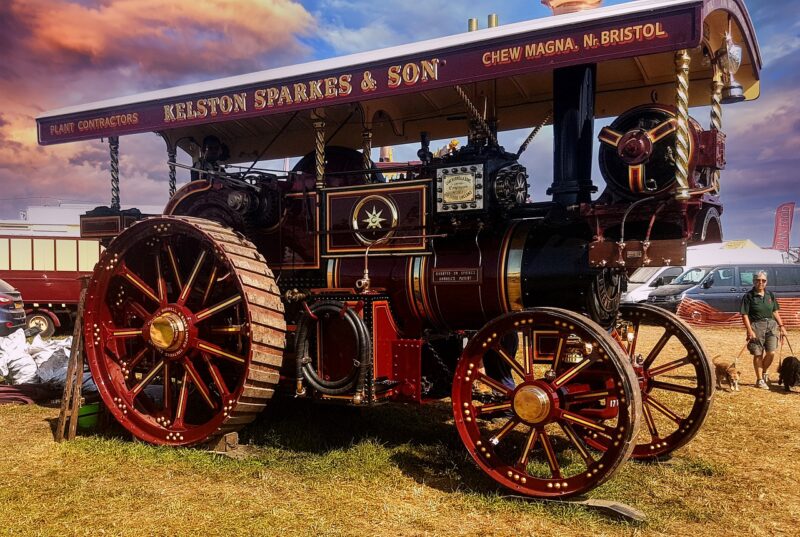
The dawn of the Industrial Revolution marked a transformative era for humanity, changing how we work, live, and interact with the world around us. Central to this period was the invention of the steam engine—a technology that not only revolutionized transportation but also redefined industry and shaped modern society as we know it today. In this article, we will explore the pivotal role the steam engine played during the Industrial Revolution and how it contributed to the economic and social upheavals it triggered.
1. The Origins of the Steam Engine
The story of the steam engine begins long before the Industrial Revolution, with early attempts to harness steam power dating back to the first century A.D. The ancient Greek engineer Hero of Alexandria created a rudimentary steam-powered device known as the aeolipile, which, while innovative, did not lead to practical applications. It wasn’t until the 17th century that significant advancements were made.
In the early 1700s, Thomas Newcomen developed the first practical steam engine, primarily for pumping water out of mines. Though inefficient, this invention laid the groundwork for future innovations. However, it was James Watt who perfected the steam engine in the late 18th century, introducing a separate condenser that vastly improved efficiency and made it suitable for various industrial applications.
2. The Mechanism of the Steam Engine
To understand the significance of the steam engine, it’s crucial to grasp how it operates. At its core, a steam engine converts the energy stored in steam into mechanical work. The process involves:
- Water Heating: Water is heated in a boiler, producing steam, which is at a high pressure.
- Steam Expansion: The steam expands in a cylinder, pushing a piston. This linear motion can be converted into rotary motion to drive machinery.
- Exhausting Steam: After performing work, the steam is cooled and condensed back into water, allowing it to be reused in the boiler.
This efficient cycle of producing power from steam allowed industries to move away from water and muscle power, leading to rapid advancements in manufacturing, transportation, and agriculture.
3. Impact on Transportation
One of the most profound impacts of the steam engine was on transportation. The introduction of steam-powered locomotives and ships transformed how goods and people moved, fueling economic growth and facilitating trade.
3.1 Steam Locomotives
The development of railways in the early 19th century marked the beginning of the railway age. George Stephenson’s locomotive, the Rocket, became a symbol of this revolution. It demonstrated not only the feasibility of steam-powered trains but also their potential to connect cities and enhance long-distance travel. Railroads slashed travel times, which in turn accelerated the movement of raw materials to factories and finished products to markets.
3.2 Steamships
Steamships also changed maritime commerce, allowing ships to travel faster and more reliably than their wind-powered counterparts. This made international trade more efficient, integrating global markets and expanding horizons for businesses and consumers alike.
4. Transformation of Industries
The steam engine catalyzed an industrial transformation by enabling factories to operate more efficiently. Here are a few industries that were significantly impacted:
- Textile Industry: The steam engine was crucial in mechanizing textile production. Factories like the cotton mills in Manchester used steam power to dramatically increase production rates and reduce costs, stimulating the growth of the textile industry.
- Mining: Steam engines were used extensively to power pumps for removing water from mines and to drive machinery that extracted resources, fundamentally changing mining operations and boosting output.
- Construction: Steam-powered tools replaced manual labor, expediting the construction of roads, bridges, and buildings, thus reshaping the urban landscape.
This shift from manual labor to mechanization marked a crucial evolution in work processes and laid the foundation for modern economic structures.
5. Social and Economic Changes
The ripple effect of the steam engine extended beyond industry; it had profound social and economic implications:
- Urbanization: The rise of factories led to mass migrations towards urban centers, as people sought jobs in industrial settings. Cities expanded rapidly, transforming demographics and living conditions.
- Labor Relations: The demand for labor led to the rise of a working class, giving birth to new labor rights movements and changing the landscape of employment.
- Global Economy: With increased efficiency in production and transportation, goods could be produced and delivered on a scale never before seen, contributing to the creation of a global economy.
These changes laid the groundwork for modern society, with enduring effects on our economic and social frameworks.
6. Environmental Impact and Legacy
While the steam engine was revolutionary, it came with its own set of challenges, particularly concerning the environment. The increased use of coal for steam power contributed to air pollution and laid the groundwork for future environmental discussions. The legacy of the steam engine is a complex one, highlighting both progress and the need for sustainable practices.
Moreover, the steam engine symbolized the onset of mechanization, paving the way for future technological advancements, from electricity to computing, that continue to shape our lives.
Conclusion
The steam engine played a crucial role in the Industrial Revolution, acting as a catalyst for profound changes in society, the economy, and the environment. Its invention not only spawned innovations in transportation and industry but also transformed social structures and way of life, highlighting the duality of progress and responsibility.
As we reflect on the impact of the steam engine, we’re reminded of our ongoing journey in technology and the balance we must find between progress and sustainability—a lesson that resonates even in today’s rapidly evolving world.








